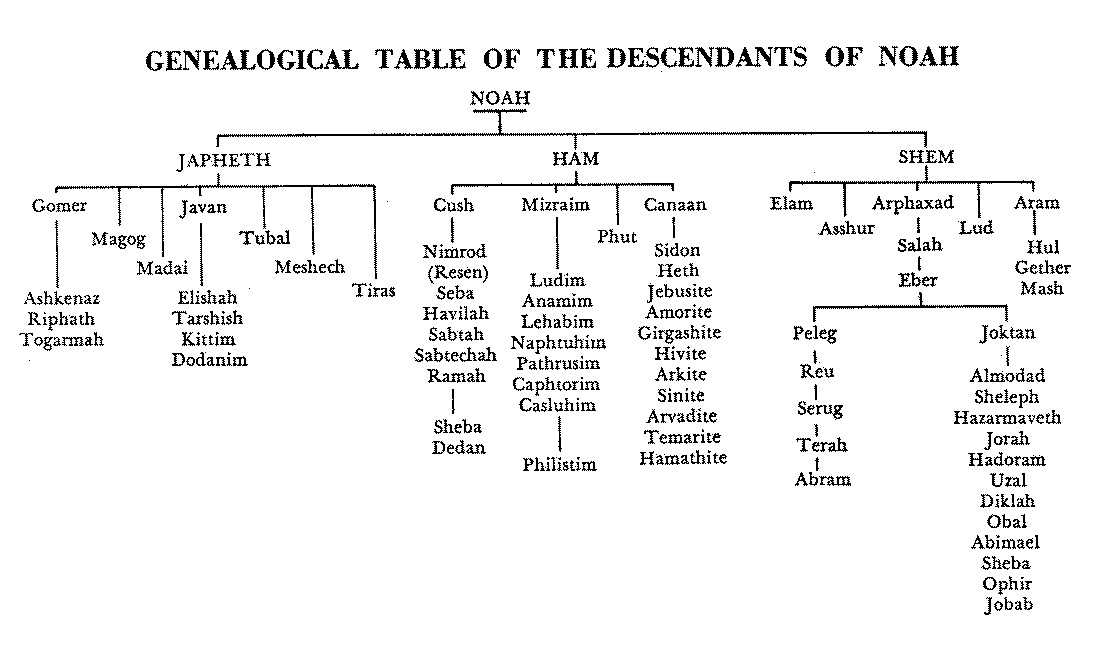 |
| click here to see enlarged map |
Notice that the last genealogy chapter we read in Genesis was simply called "From Adam to Noah." For that describes exactly what that chapter is about. It is a recognition of the great men who walked the Earth before Noah.. However, "The Table of Nations" is a much stronger title, for it describes not only the family lines which descended from Noah's 3 sons, but how the world was repopulated after the Great Flood.
I expected Canaan's descendants to come into some sort of misfortune in this chapter since Noah cursed Canaan's father in the previous story. However, Canaan's descendants come into a nice stretch of land which you can see for yourself in the above map. (I suppose the prophecy will be fulfilled later on) The clans of Canaan spread from Sidon all the way south to Gaza. Cush, Canaan's brother, had sons and grandsons as well. The most famous being Nimrod who's kingdom spread from Ninevah (later the capital of Assyria and the title of this blog ;) ) down south to Uruk. I'm still trying to figure out why the word nimrod has a negative connotation when the original Nimrod was a great leader. If your find the answer please comment!
I had a harder time finding the location in which the descendants of Shem and their respective clans spread. However, the Bible does say that they settled further east. Japheth's descendants inhabited the area surrounding Tarsus by the Mediterranean sea. There are also many legends surrounding The Table of Nations. Some regions still claim one of Noah's son's as their direct ancestor. Numerous maps created by theologists and amateur biblical historians can be found online and in book stores which list the exact regions each descendant of Noah inhabited. But since these are the only regions described directly in Scripture, they are the only ones we will go into.
I believe the most important lesson to take away from this chapter is not just that they scattered throughout the middleast and repopulated the world, but that even though many of these regions would later become rivals, they all descend from Noah, and thus from Adam. In other words, we are connected, and we are all a human family. Though the Assyrian Empire later becomes the enemy of the Hebrew people, they could both trace their family lines back to the same person. Therefore, no matter what our culture, race, or
 |
| click here to see enlarged version of genealogical table |
No comments:
Post a Comment